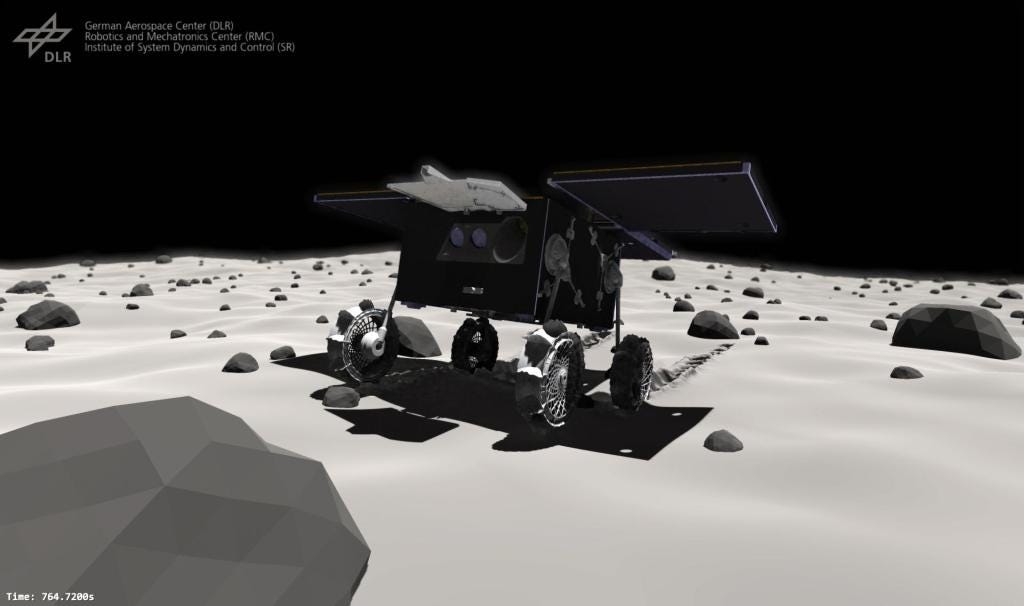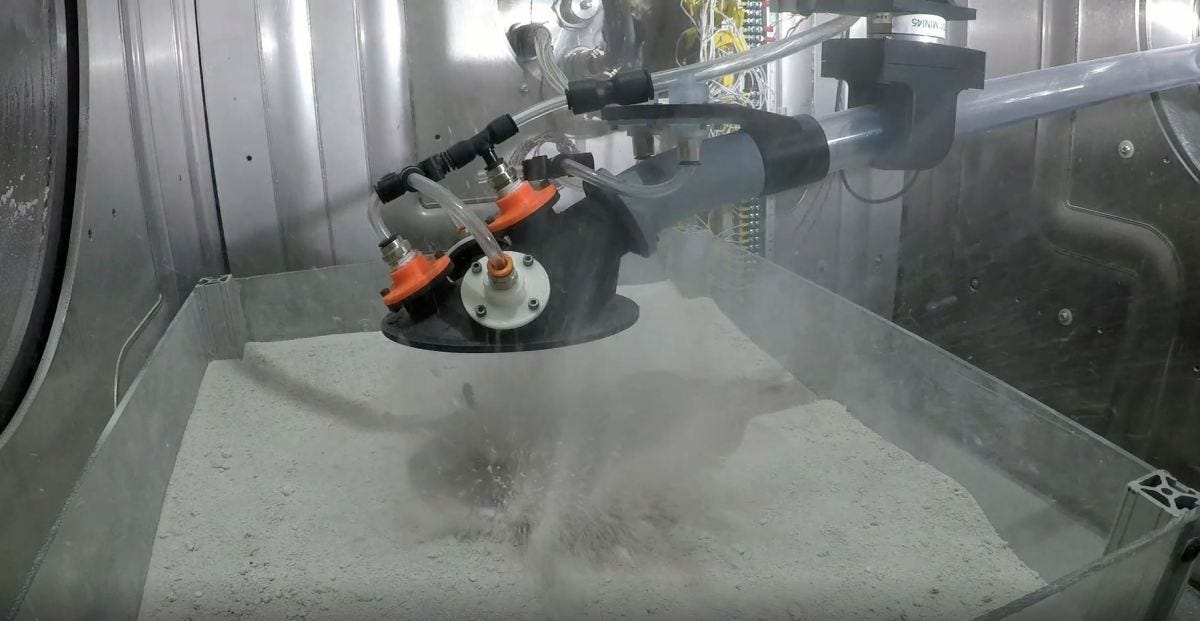Japan wants to sample Mars’ moon Phobos with its MMX mission
This is the first time the martian moons will be fully mapped, and samples brought to Earth from the martian system.

Where did the moons of Mars, Phobos and Deimos, come from? The answer will help us understand what the inner solar system was like shortly before life arose on Earth. Japan’s Martian Moons eXploration mission, or MMX, launches in 2024 to study the moons and return samples from Phobos to Earth in 2029.
Why do we need MMX?

There’s a lot we don’t know about the Martian moons Phobos and Deimos. They are small and lumpy, with Phobos measuring just 22 kilometers across and Deimos even more compact at 13 kilometers wide. Scientists think they could be asteroids captured by the red planet. If so, the martian moons are relics of the four-billion-year-old process where asteroids and comets delivered organics and water—two key ingredients for life—into the inner Solar System. But their orbits tell a different story.
Their circular orbits suggest they formed from debris knocked into space from Mars itself. Mars may have been impacted by a large asteroid or comet during the bombardment process, with the resulting orbital debris becoming rings that clumped into small moons. It’s possible Mars’ gravity tore the innermost moon into rings again over time, and that Phobos is a product of an ongoing ring-moon cycle!
Figuring out how Phobos and Deimos formed would give scientists another data point in determining what happened in the inner solar system before life arose on Earth. Japan’s Martian Moons eXploration mission, or MMX, will survey the moons and bring a sample of Phobos back to Earth. If the moons came from a giant impact on Mars, the resulting heat and energy should have removed most traces of water. If the moons are captured asteroids, they should have substantial water and organic materials like we find on similar small worlds.
MMX is also a technology demonstration mission. Phobos will be one of the farthest worlds we’ve collected samples from, and MMX will have to travel deep within Mars’ gravitational influence to collect them. Phobos itself has just enough gravity to require careful maneuvering to keep MMX from landing too hard, but not enough gravity to keep the spacecraft from bouncing if it doesn’t absorb the impact properly.
Studying Phobos using MMX’s remote sensing instruments will tell us a lot, and the samples it returns to Earth will tell us even more, like the moon’s age. Despite impressive technology advances in robotic space missions, certain science questions can only be answered by tools that are too large, heavy, and power-hungry to fly on spacecraft. Furthermore, the samples are likely to contain diverse bits and pieces of Mars from across the planet, thrown into orbit by meteorites. In a way, MMX will be the first Mars sample return mission, beating out NASA and the European Space Agency by at least 2 years!
The MMX mission is refreshing because while Mars has been extensively explored, its moons haven’t gotten their fair share. Past missions to Phobos haven’t been successful, with the Soviet Union’s Phobos 2 spacecraft failing in 1989 shortly after it began mapping Phobos and before the onboard lander was to be dropped. The Russian space agency launched the ambitious Fobos-Grunt spacecraft in 2011 to return samples from Phobos. Shortly after launch, the spacecraft failed in Earth orbit itself. As such, all we have of the martian moons are images taken by Mars orbiters from afar every now and then.
How will MMX study the martian moons?
MMX will launch in 2024 and enter Mars orbit a year later. It will gradually get closer to Phobos, entering what mission planners call a quasi-orbit: while it may look like MMX is orbiting Phobos, it’s actually just orbiting Mars in a way that lets it circle Phobos at the same time. This will be no easy challenge, since Phobos is deep inside Mars’ gravity well and just 6,000 kilometers above the surface, meaning a spacecraft orbiting it would keep getting pulled toward the red planet.

MMX will spend a year studying Phobos with its remote science instruments while searching for a safe and scientifically interesting place to land. A wide-angle camera and laser mapping system will map the moon in 3D, while a narrow-angle camera provides a closer look at specific areas.
The French Space Agency is also contributing a near-infrared spectrometer called MIRS to map the minerals on Phobos’ surface with a resolution of 20 meters. It can identify any water-bearing minerals and organic material on Phobos, to help determine if the moon is a captured asteroid. A complementary spectrometer is coming from NASA called MEGANE, which will look at highly energetic gamma rays and neutrons released from the surface. Their specific energies are characteristic of the elements that produce them. MEGANE will let scientists know what elements Phobos is made up of, such as iron or oxygen, and also tell the relative composition of elements in the minerals that MIRS detects.
A dust sensor will look for orbiting particles knocked off Mars and Phobos by meteor impacts. To complete the instruments package, MMX will carry a mass spectrometer to detect any charged gases that were once part of possible ice within Phobos and escaped due to some activity.
As MMX descends to Phobos for landing, it will deploy a small German and French-built rover based on MASCOT, which Hayabusa2 dropped to tumble around asteroid Ryugu. The rover will travel around Phobos for at least 100 days analyzing the surface at a level of detail not possible from orbit, thus contributing to solving the moon’s origin mystery.

We don’t know exactly what Phobos’ surface is like: is it rocky, fluffy, or sandy? MMX is prepared for a variety of possibilities with two sampling devices called C Sampler and P Sampler. C Sampler is a robotic-arm-mounted drill that can bore 10 centimeters beneath the surface. P Sampler works by releasing pressurized gas to kick up surface materials, which travel through a tube into a collection container. P Sampler is a derivative of Honeybee Robotics’ PlanetVac, a Planetary Society-supported technology designed to simplify and lower the cost of sample collection.

Once MMX collects its samples, it will lift off from Phobos enter Mars orbit, tweaking which will make it pass by Deimos several times to map the smaller moon. MMX will leave the martian system in 2028 and return to Earth in 2029. When near Earth, it will jettison a small capsule containing the samples, which will plummet through Earth’s atmosphere and use a parachute to land safely for collection.
8K views of Mars and Phobos
The Japanese Broadcasting Corporation is providing a pair of 4K and 8K cameras to film MMX’s journey during the mission. Not only will this allow for stunning views of Mars and the moons, but it will also be useful in operating the spacecraft. Some images will be transmitted to Earth during the mission, and the full archive will be stored in a recording device in MMX’s return capsule to be brought back to Earth!
Originally published at The Planetary Society.
Like what you read? Support me to keep me going.
